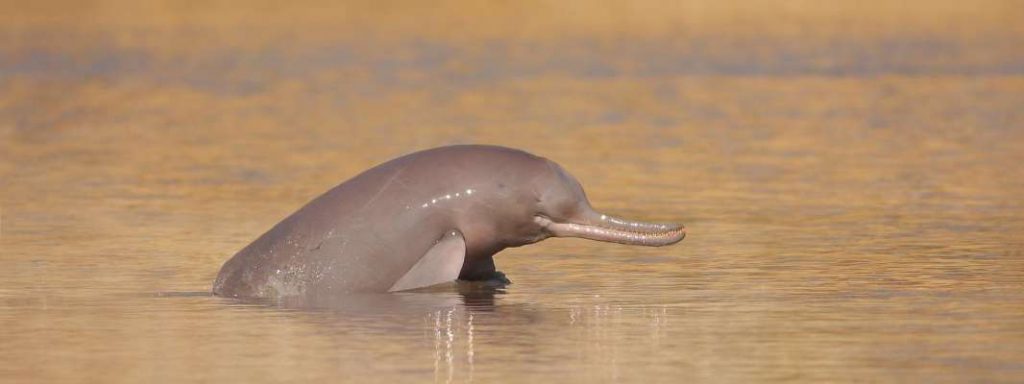New Delhi, May 10: Only five to 11 individual Indus Dolphins, one of the world’s rarest mammals, survive in India, with their habitat confined to 130 km stretch of Beas river in Punjab, reveals the first-ever organised census.
Low water flow due to several blockages like dams and barrage over the Beas, some in Himachal Pradesh where the river emerges, and on its tributaries like river Parvati, pose a challenge to the species, officials said.
Native to only in India and Pakistan, the Indus Dolphins in India were found in an only 185 km stretch between Talwara and Harike Barrage in Beas river where they were first spotted in 2007. Later, the government declared this stretch as a protected zone, barring mining and fishing along the river
However, the first-ever census done by Punjab government and WWF India, showed that the population only survives in the last 130 km downstream of the habitat stretch, due to less water in first 55 km of downstream from Harike Barrage.
Pakistan has about 1,800 of these rare aquatic mammals, Platanista gangetica minor, over a 1,500 km stretch of Indus River. The silver lining is that whatever population survives in India, it is also breeding.
“What we are excited about is that it’s a breeding population. We had spotted one calf which was only a few weeks older, and one sub-adult calf. There are concerns, but at least we know about their population and there is lot to do,” Suresh Babu, Director River, Wetland and Water Policy, WWF India said.
Experts say these aquatic mammals were also found in Sutlej decades back, but river pollution is believed to be a major cause of their extinction from the habitat. “Beas is not polluted, challenge is the water flow fluctuation. It’s concerning that this is the only surviving population in India,” Suresh Babu said.
He added that the 55 km upstream does not have much water, which confines the habitat, and that is another challenge to ensure that population can move upstream as well. “We had already declared the 185 km stretch as conservation reserve, so we are already doing what is needed to be done to support the species,” Kuldeep Kumar, Chief Wildlife Warden, Punjab said.
According to the International Union for Conservation of Nature (IUCN), construction of critical barrages is associated with the large-scale decline in the area of occupancy, “which have not ceased”. IUCN suspects the population size of the Indus river dolphins has reduced by more than 50 per cent since 1944. A blind species that communicates through echoes like bats, Indus Dolphins are one of the seven freshwater dolphins found across the world.
IANS

